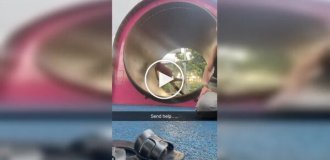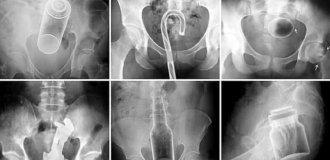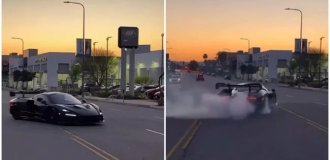The history of the legendary Volkswagen car brand is not as long as that of many famous automobile companies, but it is full of events. After all, at its core is an explosive mixture of politics, intrigue, engineering talent and human destinies. It all started in the 30s in Germany. The origins of the Volkswagen company were the outstanding automotive engineer Ferdinand Porsche, who then headed his own design bureau in Stuttgart and was engaged in the design of small cars with 4-cylinder boxer engines.

Ferdinand Porsche
In 1934, his bureau received an order of enormous political importance: to develop and launch mass production of small, cheap cars. The fact is that the regime that then ruled in Germany was very interested in mass support from the population.

And already in 1935 such a car was developed. It was named Volkswagen (“Volkswagen”), which literally translated from German means “people's car.” After two years of testing, the VW30 series was launched in 1937, and by 1938 the car acquired an appearance familiar to many generations.

Due to its external resemblance to a beetle, journalists gave the Volkswagen VW30 the nickname Beetle. Later it became the name of the car.
The car turned out to be successful: simple, quite reliable in operation and cheap - therefore, accessible to the broad masses of the population. But the main thing is that this car initially had enormous modernization potential. In other words, the car was built with a temporary potential reserve of forty to fifty years.
On May 26, 1938, in the small German town of Fallersleben, a plant was founded (where Volkswagen cars were subsequently produced), where, in fact, this production was supposed to be established. Perhaps the name of the city did not seem too euphonious to some, and did not correspond to the scale of such a project, since it was later renamed Wolfsburg.
The car model intended for the plant, which was called the Volkswagen 38, had an air-cooled engine with a volume of only 985 cm3. The car also had another name - KdF, an abbreviation for Kraft durch Freude - "strength through joy." To raise funds for the construction of this automobile plant, a subscription was announced with a deposit for future cars, and bonds were issued. So Volkswagen becomes twice the people's car for the Germans: it is intended for the people and is built with the people's money.

However, few were able to become happy Volkswagen car owners - in 1939, World War II began. The production of passenger cars of this brand - Volkswagen - was suspended. During the war, the Volkswagen plant was reoriented to the production of military equipment. Such as the Kubelwagen (type 82) all-terrain vehicle.

After the end of the war, the enterprise came under the control of the British, in whose zone of occupation Wolfsburg was located. In the fall of 1945, the British authorities handed over an order to the plant for 20 thousand cars. But only almost ten years later mass production of the car began in its original modification. In 1947, Volkswagen was exhibited at the Hannover export fair and attracted a lot of attention. The plant received the first foreign order from Holland for a thousand cars, and in 1948 orders began to arrive from Switzerland, Belgium, Sweden and other countries. The Volkswagen Beetle came in many different modifications, including a pickup truck.

In January 1948, the management of Volkswagen changed, and Heinrich Nordhoff, a representative of the new generation of German technocrats, became its general director. The updated management consisted of certified engineers who had international experience working in automobile factories and were able to think outside the box. With their arrival, the car was improved and modernized.

Heinrich Nordhoff
In 1949, models with new body types began to be produced - convertible and limousine. In mass production, the interior equipment became more comfortable, and a partially synchronized engine was installed. A network of car service centers and technical stations for car servicing was established. We constantly worked with Western clients. Volkswagen has created a powerful car sales network.

Volkswagen Type 87 Kommandeurswagen.
VW Hebmuller Beetle Cabriolet Type-14A

The export of the car, which gained worldwide fame, by the end of 1948 amounted to about 50 thousand cars, about 15 thousand were sold on the domestic market. By this time, the plant was freed from the allied control of the British, and on September 6, 1949, Volkswagen was completely transferred to the Federal Republic of Germany. A new stage in the development of the plant began, which, first of all, was marked by an intensive increase in production and an increase in sales. By 1950, 100 thousand cars were produced, by 1951 - 500 thousand cars, and on August 5, 1955, a ceremony was held to mark the release of the millionth Volkswagen. The motto of this time in the life of Germans becomes a popular phrase associated with Volkswagen - “He is a member of my family.”

The Volkswagen Beetle as it is best remembered.
The reliability and affordable price of the car, proven over the years, strengthened the export capabilities of the car. Volkswagen is already sold in 150 countries around the world. Subsidiaries appeared abroad - in 1953 in Brazil, in 1956 in South Africa, in 1957 in Australia, in 1964 in Mexico (the Beetle has been produced here since 1998, which became a real hit of the season among Hollywood stars ) and other countries.
The first modification of the standard Volkswagen 1200 in 1955 was the Karmann-Ghia sports coupe, the brand of which was made up of the names of the companies that created it: the body was designed by the Italian company Ghia, and it was assembled by the German coachbuilder Karmann in Osnabrück.

Karmann-Ghia
In 1961, the program was replenished with the new Volkswagen-1500 with a sedan body and an engine of increased displacement, on the basis of which the next versions of the Karmann-Ghia coupe and convertible were produced.

Convertible Karmann-Ghia

In 1965, Volkswagen bought Audi from Daimler-Benz, creating the Volkswagen-Audi concern, known by the abbreviation VAG.

Volkswagen 1500 S is a middle class sedan with a larger displacement engine.
The first result of the merger in 1968 was the VW-411 with an air-cooled engine with a working volume of 1679 cc. The model was accepted by buyers very restrainedly. In 1969, after the merger of the NSU company, the first Volkswagen with front drive wheels appeared, receiving the “K-70” index. It could be purchased with engines with a displacement of 1594 or 1795 cc.

Volkswagen VW-411, the first car jointly developed with Audi, was not particularly successful
In 1969-1975, in collaboration with Porsche, Volkswagen-Porsche-914 sports cars with 4- and 6-cylinder engines of 1679 and 1991 cc were produced.

In 1970, the VW-181 appeared with a utilitarian open body, reminiscent of wartime army vehicles.

Its development in 1979 became the light all-wheel drive army vehicle lltis.

The front-wheel drive Passat, released in 1973, is considered the ancestor of the new generation of Volkswagen. It was offered in numerous variants with engines ranging from 1297 to 1588 cc.

The following year, the sporty Scirocco appeared with a 3-door coupe body and engines ranging from 1093 to 1588 cc.

The Golf I model, which appeared in 1974, turned out to be the most successful: modern, economical, reliable, just such a model could stir up the international market. The Golf marked a new stage of competition in the production of a class of compact cars that became almost officially called the "Golf class". In the first 30 months of production, 1 million Golfs rolled off the assembly line, turning Volkswagen into one of the largest car manufacturers in Europe. In 1979, the Golf convertible appeared, which was always in high demand.

In 1979, the Golf convertible appeared, which was always in high demand.

At the beginning of 1975, the “younger brother” of the Golf was introduced - a three-door front-wheel drive Polo, similar in design to the Audi-50 and offered with engines with a displacement of 895-1272 cc. The inexpensive and practical Polo also became very popular and strengthened Volkswagen's financial position.

Passat 1976

VW Passat Variant 1979

Since 1980, the Jetta model with a 4-door sedan body was produced on the Golf basis.

In 1992, it was replaced by a similar car (already on the third generation Golf chassis), called Vento.

In 1981, the Passat and Scirocco were modernized, and a year later a sedan appeared on the basis of the Passat, which for the first time was equipped with a 5-cylinder petrol S engine with a displacement of 1994 cc.

Volkswagen Santana
Golf II was released in 1983

In the period 1988-1995, the only 3-door coupe Corrado in the program, the successor to the Scirocco, was assembled.

In 1991, the Golf III debuted, which, like previous models, maintained the high reputation of the Golf.

The compact third generation Polo model has been in production since 1994. The bodies are 3- and 5-door hatchback, Polo Classic sedan and 5-door Variant station wagon. Engines are gasoline and diesel 4-cylinder with a working volume of 1.0-1.9 liters and a power of 50-101 hp.
Polo

Polo Classic

Polo Variant

The comfortable first generation Vento family is equipped with 4- and 6-cylinder engines of 1.6-2.8 liters with a power of 75-174 hp.
Vento

The Sharan high-capacity station wagon has been produced since 1995 in 5-7-seater versions, on a front-wheel drive and all-wheel drive chassis. The power of gasoline and diesel engines with a working volume of 1.9-2.8 liters ranges from 90-174 hp. Developed together with Ford, the Volkswagen Sharan minivan is an almost complete copy of the Ford Galaxy. The differences are in the emblems, range of engines and the ability to order an all-wheel drive transmission on VW.

The fifth generation Passat family of models was introduced in 1996. Unlike previous cars produced since 1988, they are again unified with the same type Audi models A4 and A6. This made it possible to use more powerful and modern longitudinal Audi power units. Formally belonging to the middle class, in terms of size and level of equipment, the Volkswagen Passat B5 fell, rather, into the category of business class cars.

VW Golf IV was released in 1997

In 1999, the comfortable BORA sedan model was released. Based on the Golf IV, the sedan was sold in Europe under the name Bora, and in the USA it was called Jetta.

Several Volkswagen plants in Brazil, Mexico, Argentina and China produce a number of models that differ significantly from European products. Among them are the Gol, Parati and Santana models, created on the chassis of the Golf and Passat models of previous generations.
Parati

The Mexican branch continues to produce the 1.6i Beetle model with a 1.6-liter 44 hp engine, and since the beginning of 1998, it has mastered the production of a fundamentally new front-wheel drive Beetle car on the chassis of Golf models, outwardly similar to the famous “Beetle”.

The VW Golf V generation rolled off the assembly line in 2003.

In 2005 The VW Jetta sedan was developed on the basis of the Golf V.

VW Passat (B6) 2005

VW Passat R36 2006

VW Eos is Volkswagen's first coupe-cabriolet. The prototype was presented at the Frankfurt Motor Show in 2003, and on September 12, 2005, the production model was shown there for the first time. Eos appeared on the market in May 2006. The Eos uses the shortened PQ46 platform from the VW Passat B6. The roof was designed by Webasto.

VW Passat BlueMotion 2007

Volkswagen Passat CC is a four-door coupe designed on the basis of the VW Passat B6 (Typ 3C) and has been produced since 2008 at the Volkswagen plant in Emden. The letters -CC- in the model name stand for “comfort-coupe” (German: Comfort-Coupe), which supposedly gravitates towards a more “flattened”, sporty body shape of the model. However, this model was conceived by the management of the Volkswagen concern not as a modification of the regular Passat, but as a car of a different, more comfortable class - to fill the market niche between the classic Passat and the Phaeton model. The Passat CC was first presented at the Detroit Motorshow in 2008. In the same year, its production began in Europe, and six months later in the USA.

The Volkswagen Phaeton is the first executive (F) class car in the entire 70-year history of Volkswagen. Since 2002 it has been produced (mostly hand-assembled) at the Glaserne Manufaktur plant in Dresden in Germany. The prototype of the car, under the working title Concept D, was first presented in 1999 at the Frankfurt Motor Show. Since April 2007, it has been the first luxury car to meet the Euro 5 environmental standard with a V6-TDI diesel engine (V-shaped turbo engine with injection system). The name of the car comes from the name of the hero of Greek mythology Phaeton. Initially, in transport, phaetons were light open horse-drawn carriages; later the name was transferred to passenger cars with a soft opening top.

The VW Scirocco III was shown at the 2006 Paris Motor Show under the name Iroc, the name was later expanded to Scirocco. It has been said that it has more in common with the original design in spirit and name, but not in form. Scirocco 2008 received four options of gasoline engines and two diesel engines: Volkswagen TSI 120 hp. (89 kW), 158 hp (118 kW) and 200 hp (150 kW), as well as 200 hp. 2.0T FSI (currently found in Golf GTI, Jetta and Passat) and TDI 2.0 138 hp diesel engines. (103 kW) and 168 hp (125 kW) (currently installed in Tiguan).

Volkswagen Tiguan - produced since 2007, built on the Volkswagen Golf platform and is a representative of the compact crossover class. The name Tiguan is a combination of the words Tiger and Iguana. Currently, the car is produced at Volkswagen factories in Wolfsburg, Germany and Kaluga, Russia. The car was presented in 2007 at the Frankfurt Motor Show, and in the same year at the Shanghai Motor Show, Volkswagen presented the Tiguan HY Motion powered by hydrogen fuel cells. The car is available with both front-axle drive and all-wheel drive. Engines - 1.4 TSI (mechanical supercharger + turbocharger, 150 hp), 2.0 TSI (mechanical supercharger, 170 hp). In both cases, the Haldex coupling is responsible for connecting the rear wheels, providing all-wheel drive with a variable gear ratio.

Volkswagen Touareg is a mid-size premium SUV from Volkswagen, produced since 2002. Currently, the car is produced at the Volkswagen plant in Bratislava. The Touareg became the second SUV in the history of the brand after the Volkswagen 181 "Kurierwagen".

VW Touareg (2002-2006)
At the Paris Motor Show in 2006, the updated Touareg was presented. The car received a more modern design, new electronic systems, such as an improved ABS system, cruise control and an alarm for the presence of passing vehicles in the “dead spot”.

At the beginning of 2010, Volkswagen presented the new generation Touareg in Munich. The car has become longer by 43 mm. and wider by 12 mm, height decreased by 20 mm. It will be equipped with an eight-speed automatic transmission. There will be four engines: a three-liter V6 TDI turbodiesel (240 hp), a 3.6 FSI petrol six with a capacity of 280 hp, a 4.2 liter turbodiesel eight (340 hp), and the first “hybrid” "in the history of Volkswagen (compressor petrol "six" 3.0 TSI with a power of 333 hp paired with a 47-horsepower electric motor). A special off-road version of the car will also be offered.

Currently, the Volkswagen concern is one of the largest in terms of sales in the world, has its factories in 15 countries, produces products under five trademarks: Volkswagen, Audi, Skoda, SEAT.
Since 1998, the concern has owned the Bentley brand. Volkswagen also owns Bugatti and Lamborghini. In addition to passenger cars, the plant also produces trucks and minibuses of the following brands: Multivan, Caddy, Caravelle, Transporter, LT and Shuttle.
The Volkswagen Group includes: Volkswagen AG, Audi AG, SEAT SA, Skoda Auto, Volkswagen-Saxonia GmbH. And more recently, Porsche.





















